Imagine waking up on a freezing winter morning, only to find that your pipes are frozen. The thought of using the toilet might seem impossible, but fear not!
In this article, we will explore the question: can you flush a toilet when pipes are frozen? We’ll delve into the factors to consider, precautions to take, and alternative solutions for maintaining toilet functionality during this challenging situation.
So, let’s dive in and master the art of flushing toilets during frozen pipes!
Key Takeaways
- Frozen pipes disrupt water supply to toilets.
- Thawing techniques include using a hairdryer, heat gun, hot towels, or heating pad.
- Prioritize safety and prevent further damage to the plumbing system.
- Alternative solutions for maintaining toilet functionality during frozen pipes include investing in a portable toilet, DIY insulation methods, and considering emergency plumbing services.
Understanding Frozen Pipes and Their Impact on Toilets
We frequently encounter issues with frozen pipes that can directly affect our toilets. Understanding frozen pipes and their impact on toilets is crucial for homeowners.
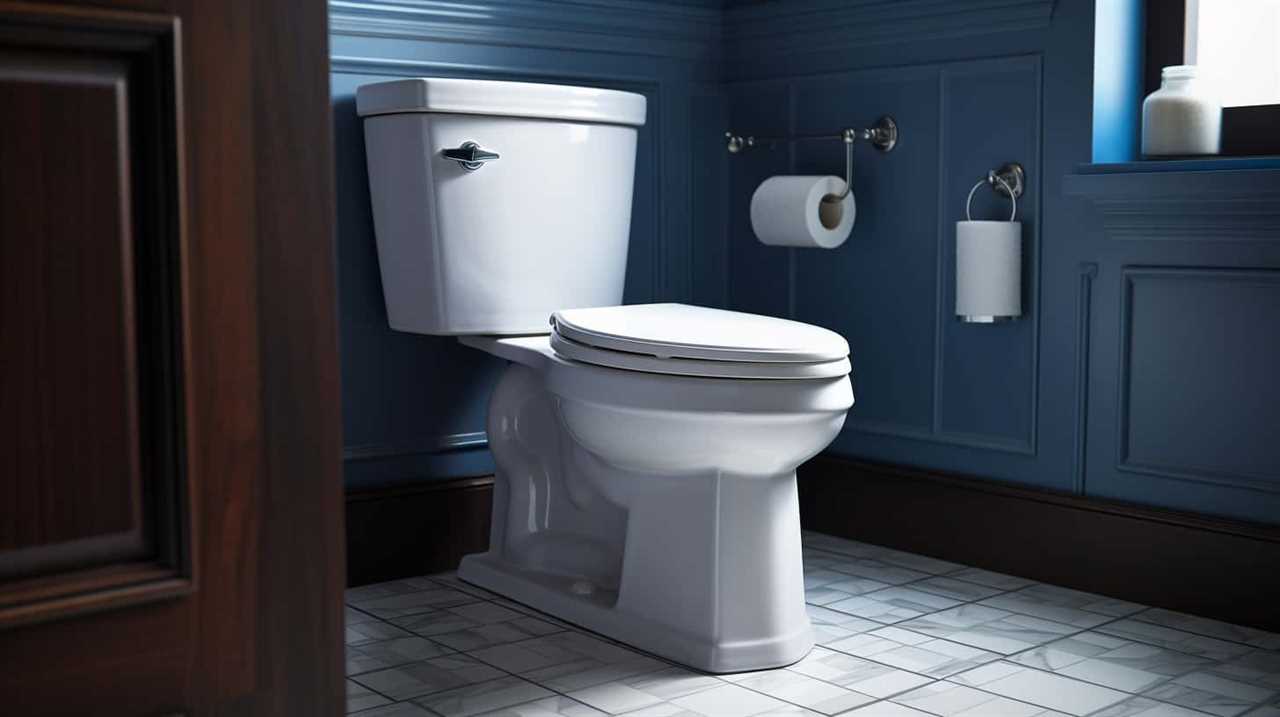
When pipes freeze, water can’t flow through them, causing a disruption in water supply to the toilet. Signs of frozen pipes include a decrease in water pressure, strange noises coming from the pipes, and visible frost on the exterior of the pipes.
Thawing techniques are essential to restore the functionality of the pipes. One method is using a hairdryer or heat gun to apply heat directly to the frozen section of the pipe. Another option is using hot towels or a heating pad wrapped around the pipe. It’s important to avoid using open flames or electrical devices near the pipes to prevent accidents.
Being aware of these signs and knowing the proper thawing techniques can help homeowners address frozen pipes and prevent damage to their toilets.
Factors to Consider Before Attempting to Flush a Toilet With Frozen Pipes
Before attempting to flush a toilet with frozen pipes, there are several factors that homeowners need to consider. It’s important to prioritize safety and prevent further damage to the plumbing system. Here are three key factors to keep in mind:
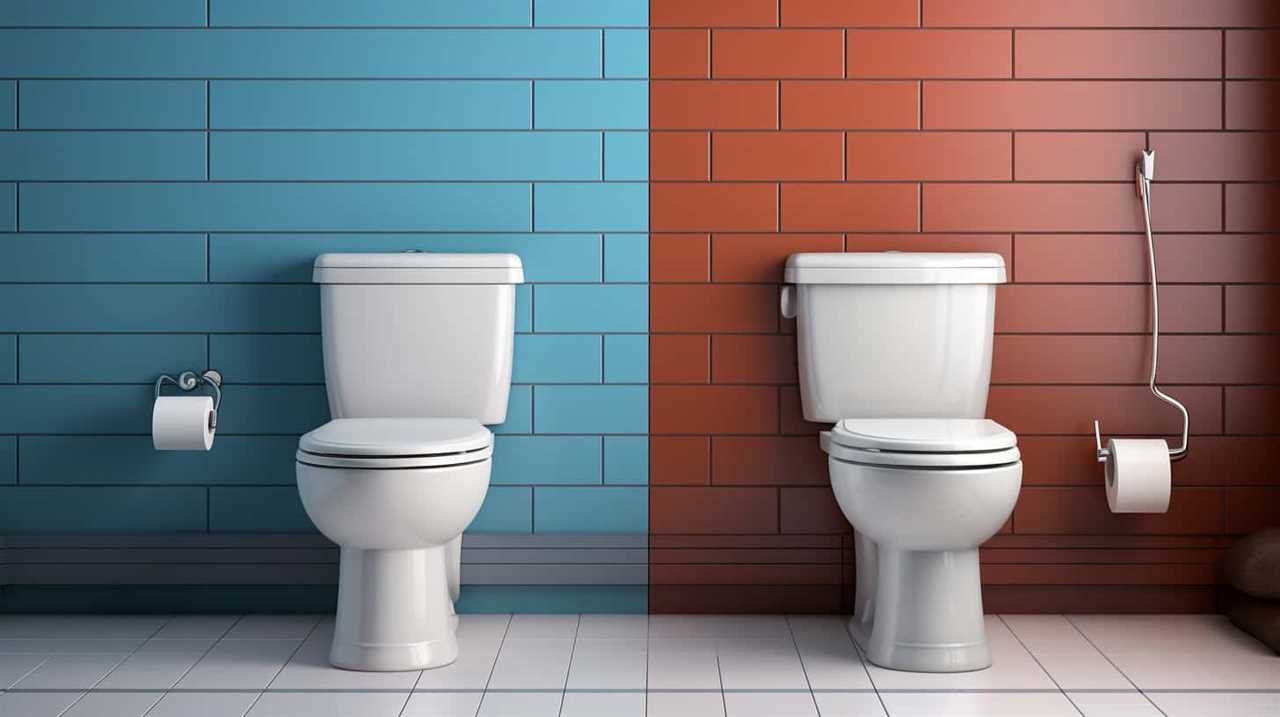
- Severity of the freeze: Assess the extent of the frozen pipes and determine if it’s a localized issue or if the entire plumbing system is affected. This will help you understand the potential risks involved in attempting to flush the toilet.
- Water supply: Check if there’s a continuous water supply to the toilet. If the pipes are frozen, it’s likely that the water supply has been disrupted. Flushing the toilet without sufficient water can lead to clogs and further complications.
- Professional assistance: Consider seeking help from a licensed plumber. They have the expertise to handle plumbing emergencies and can provide guidance on the best course of action for your specific situation.
By considering these factors, homeowners can make informed decisions about flushing a toilet with frozen pipes, ensuring the safety of their plumbing system and avoiding costly repairs.
Precautions to Take When Flushing a Toilet During a Frozen Pipe Situation
To ensure the safety of our plumbing system and avoid potential complications, it’s important to take certain precautions when flushing a toilet during a frozen pipe situation.
Toilet maintenance during winter is crucial to prevent frozen pipes in the first place. Before attempting to flush a toilet with frozen pipes, it’s essential to check the water supply. Ensure that the water is running and not frozen inside the pipes.
If the water supply is frozen, DO NOT flush the toilet, as it may cause further damage. Additionally, it’s advisable to keep the toilet lid closed to prevent cold air from entering the bowl and freezing the water.

By following these precautions, we can minimize the risk of worsening the frozen pipe situation.
Moving forward, let’s explore alternative solutions for maintaining toilet functionality during frozen pipes.
Alternative Solutions for Maintaining Toilet Functionality During Frozen Pipes
Now that we’ve addressed the precautions to take when flushing a toilet during a frozen pipe situation, let’s explore alternative solutions for maintaining toilet functionality during this challenging time.
Here are three options to consider:
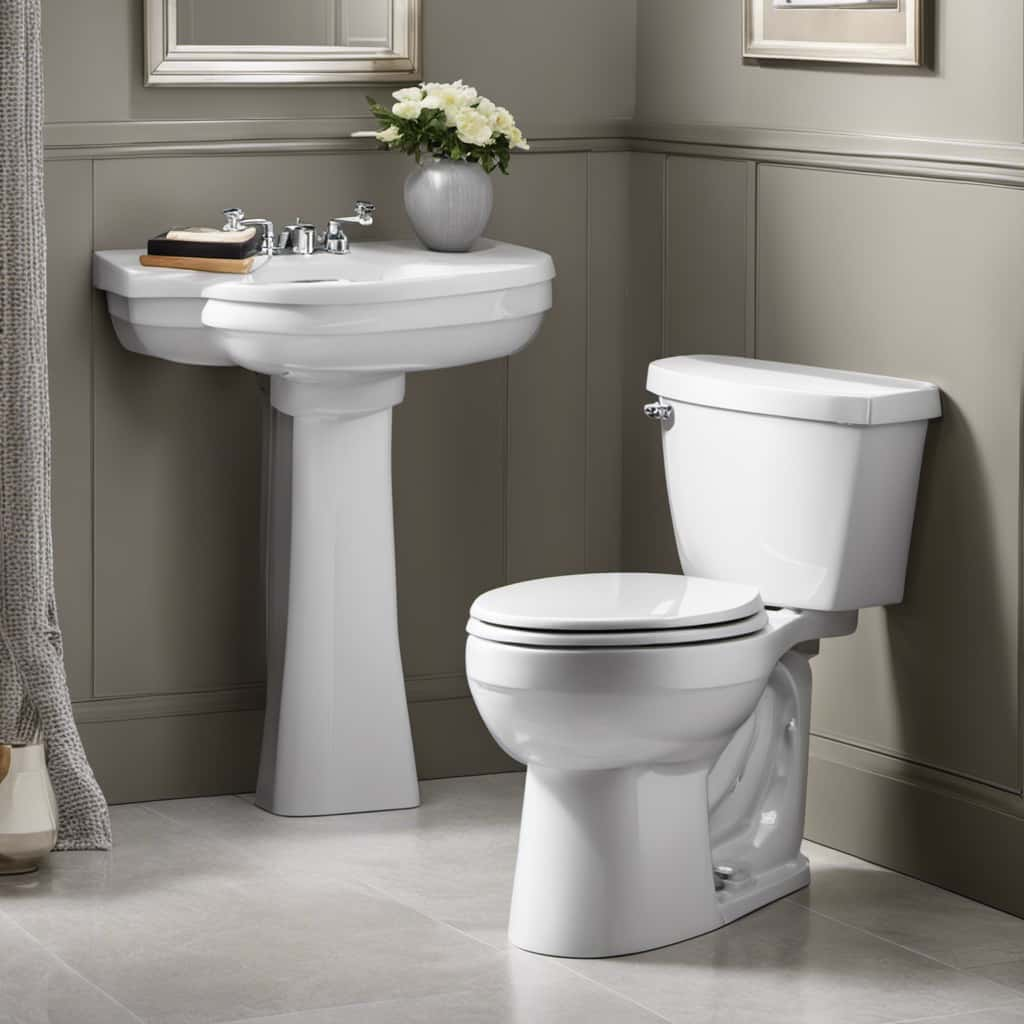
- Portable toilet options: Investing in a portable toilet can provide a convenient solution when your regular toilet is out of order. Portable toilets are available in various sizes and designs, and they come equipped with waste containment systems to ensure proper sanitation.
- DIY insulation methods: Insulating your pipes can help prevent them from freezing in the first place. There are several DIY insulation methods you can try, such as using foam pipe insulation sleeves or wrapping the pipes with heat tape. These solutions can help keep your pipes warm and prevent them from freezing.
- Emergency plumbing services: In extreme cases where your toilet isn’t functioning due to frozen pipes, it may be necessary to call for emergency plumbing services. Professional plumbers have the expertise and tools to thaw frozen pipes and restore toilet functionality.
Steps to Take if You Encounter a Toilet Backup Due to Frozen Pipes
Continuing our discussion on maintaining toilet functionality during frozen pipes, let’s now explore the steps to take if you encounter a toilet backup due to frozen pipes.
When faced with a toilet backup, the first step is to locate the main water supply valve and shut it off. This will prevent any further water from entering the toilet and causing additional backup.
Next, gather the necessary tools such as a plunger, bucket, and gloves. Use the plunger to try and dislodge the blockage by creating a vacuum and applying firm pressure.
If this doesn’t work, you may need to remove the toilet trap using a wrench and clear the blockage manually. Remember to wear gloves and take precautions to avoid any unsanitary conditions.
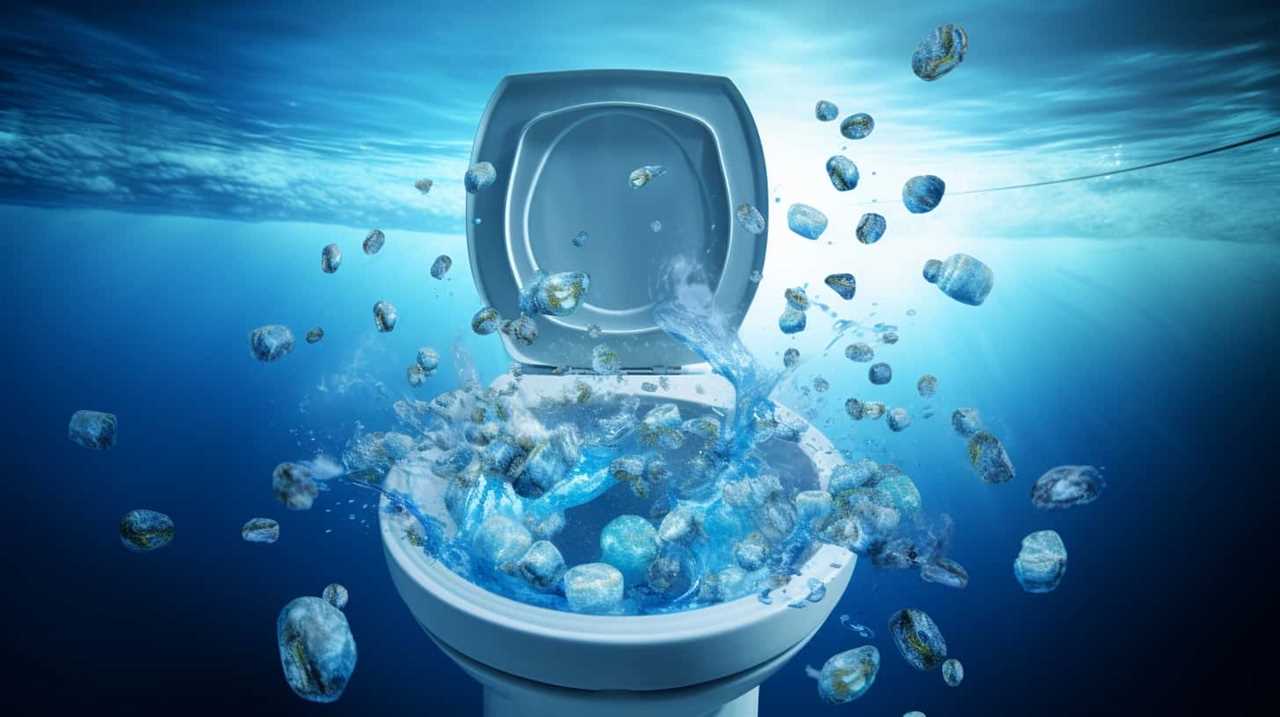
Finally, after clearing the blockage, turn the main water supply valve back on and test the toilet to ensure it’s functioning properly.
Frequently Asked Questions
How Long Does It Take for Pipes to Freeze in Cold Weather?
In cold weather, pipes can freeze in a matter of hours, depending on the temperature and insulation. To prevent freezing, insulate pipes and keep a steady flow of warm water. If pipes do freeze, do not flush the toilet.
Can Flushing a Toilet With Frozen Pipes Cause Further Damage to the Plumbing System?
Flushing a toilet with frozen pipes can result in further damage to the plumbing system. To avoid this, it is crucial to take precautions when attempting to thaw frozen pipes, such as using gentle heat sources and seeking professional assistance if needed.
Is It Safe to Use Hot Water to Thaw Frozen Pipes?
Using hot water to thaw frozen pipes safely requires precautions. It can be effective, but avoid using boiling water as it can damage the pipes. Always consult a professional if unsure.
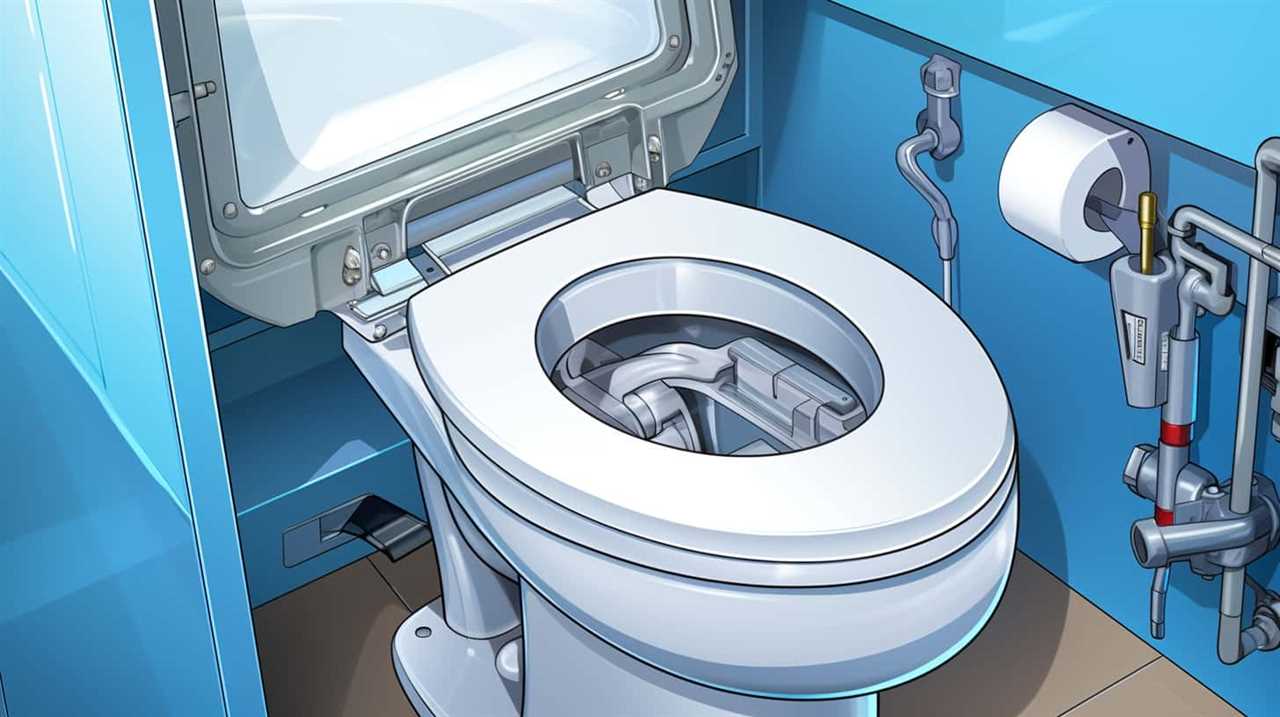
Are There Any Signs or Symptoms That Indicate Frozen Pipes in a Home?
Warning signs of frozen pipes include low water pressure, no water flow, and strange sounds from the pipes. To prevent frozen pipes, insulate them and keep the temperature above freezing.
What Are the Potential Consequences of Attempting to Flush a Toilet With Frozen Pipes?
Attempting to flush a toilet with frozen pipes can lead to potential risks such as pipe bursts, water damage, and costly repairs. It is crucial to explore alternatives like thawing the pipes or contacting a professional plumber.
Conclusion
In the icy grip of frozen pipes, attempting to flush a toilet can be like pushing against a solid wall. The stubborn pipes refuse to yield, leaving you feeling helpless.
To avoid potential damage and headaches, it’s crucial to take precautions and seek alternative solutions. Remember, when faced with a toilet backup caused by frozen pipes, swift action is vital.
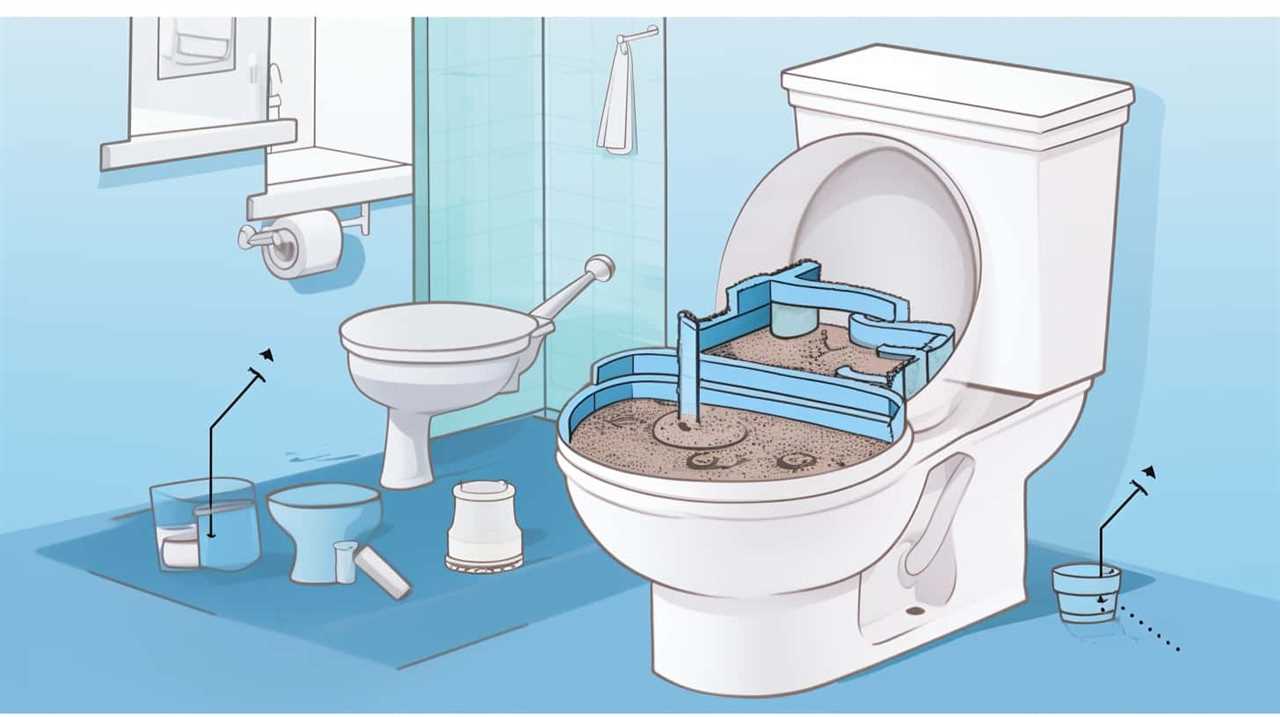
Don’t let your plumbing journey freeze in its tracks; be prepared and stay proactive.










